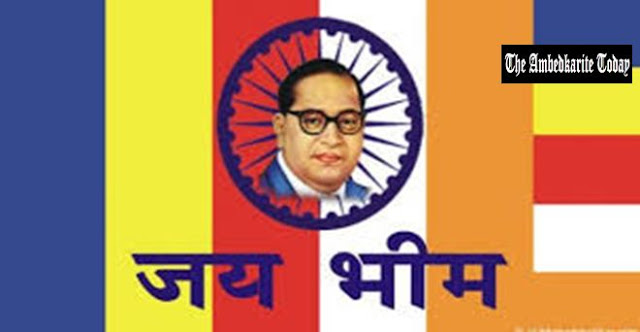The originator of “Jai Bhim” was Babu L. N. Hardas, a strong follower of Ambedkar, Chief Secretary of the Independent Labour Party
Dear friends,
As I was cursorily browsing through Eleanor Zelliot’s “From Untouchable to Dalit” (1992, Manohar), my attention was attracted to the passage:
“… his (Ambedkar’s) very name has become a symbol. The Indian nationalist cry, ‘Jai Hind’, has been transformed into Jai Bhim…”
This gives an impression that “Jai Bhim‘ came into vogue later in time and has been styled after “Jai Hind”. I think this presumption of Ms. Zelliot is historically wrong.
The Hindus used “Ram Ram” or “Jay Ramji ki” or “Jay Gopal” while greeting each other. I think the slogan of “Jai Hind” was given by Netaji Subhash Chandra Bose, for the first time, after formation of Indian National Army in Burma and a call was given to “Chalo Delhi” (“March on Delhi”). This was just before end of Second World War in 1945.
The originator of “Jai Bhim” was Babu L. N. Hardas, a strong follower of Dr. Ambedkar, Chief Secretary of the Independent Labour Party and In-Charge of C.P and Berar. He was elected legislator on ILP Ticket, in 1937, from Kamptee near Nagpur. He was one of the signatories to the “Poona Pact” and had participated in discussions with Gandhi following the Poona Pact. He was the Labour Leader and Founder of the “Beedi Kamgar Sangh” of C.P. and Berar. A writer, thinker, dramatist and a poet, Hardas, was also the editor of a Marathi weekly “Maharattha” and “Chokhamela Visheshanka”. He died young at the age of 35, in 1939.
How ‘Jai Bhim’ originated is narrated by P. T. Ramteke in his research paper titled ” ‘Jai Bhim‘ che janak — Baboo Hardas L. N.” (publ. by author, Jan. 2000), which was his dissertation for M. A. He describes how Hardas conceived and developed the idea of Jai Bhim.
Hardas was not comfortable with “Jai Rama-pati” — (ostensibly a reference to Ambedkar, I presume) — with which he was greeted after being elected as Legislature. A Moulavi explained him meaning of “Salam Alekum”, a greeting among the Muslims. From this, he got the idea of “Jai Bhim”. He decided that “Jai Bhim” should be used and responded with “Bal Bhim”. He propagated this method of greeting with the help of workers of “Bhim Vijay Sangh”. Later, he decided that “Bal Bhim” is not suitable and decided that both parties should greet each other by “Jai Bhim”. He is, therefore, considered as father of “Jai Bhim“.
It would be clear that Jai Bhim did not originate from Jai Hind. May be it is other way round.
When Christians meet they shake hands and touch cheek to cheek — jowl to jowl, when Muslims meet they embrace each other. Thus both have got culture of bodily contact promoting ‘bhai chara’ — brotherhood. We — Buddhists — seem to have emulated Hindu culture of saying “Namaste” and folding our own hands over the opposite person, as if to suggest — “Keep away from me”.
What is the difference between Hindus and Buddhists? Just the words “Jai Bhim” instead of “Namaste”! (OR even “Namma-sati” , as a friend of mine, who is proud of Pali being the origin of all Indian languages insists — instead of Jai Bhim!”.) Let us not discuss the methods of greetings as propagated by Manu Smriti. May be some other time.
Thanks
Dr. K. Jamanadas
Courtesy- Ambedkar.org

